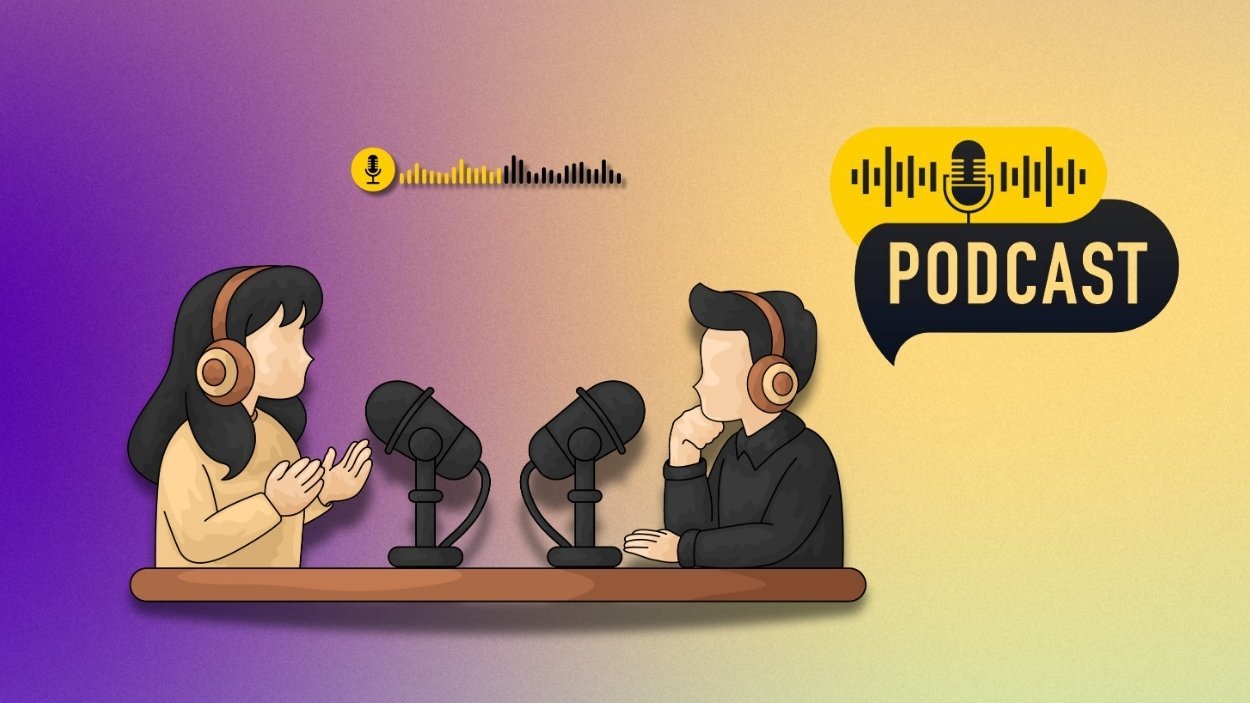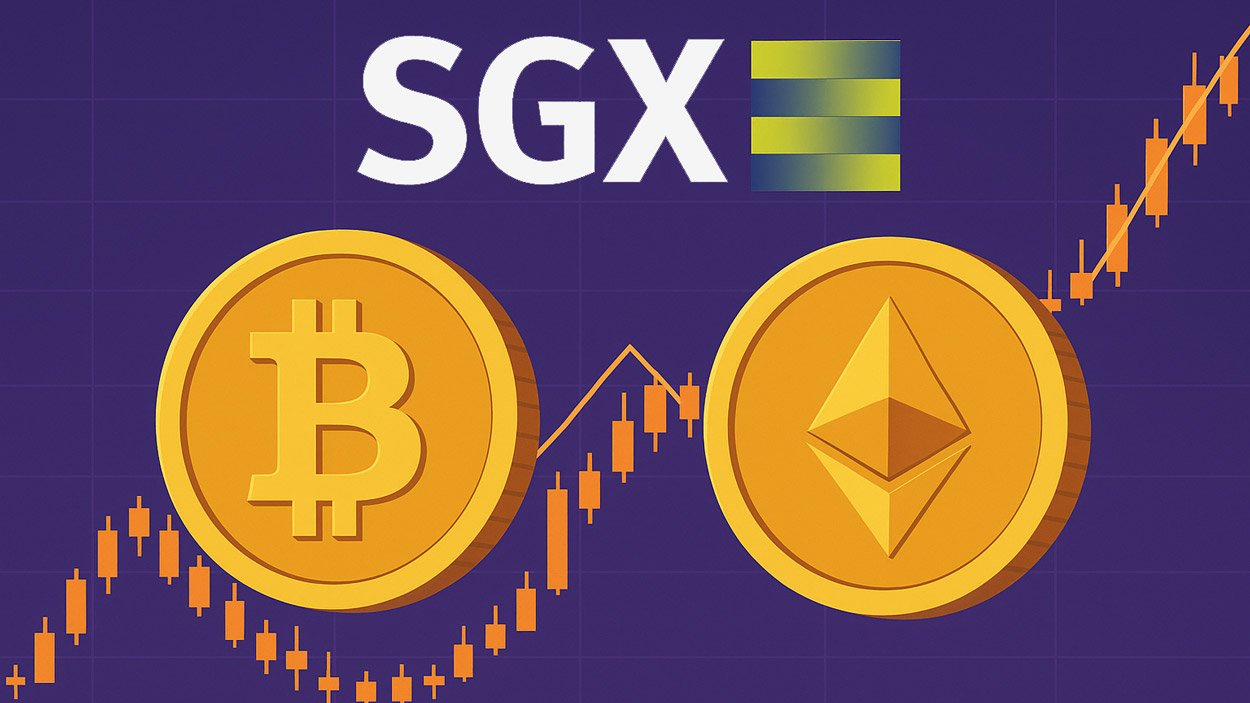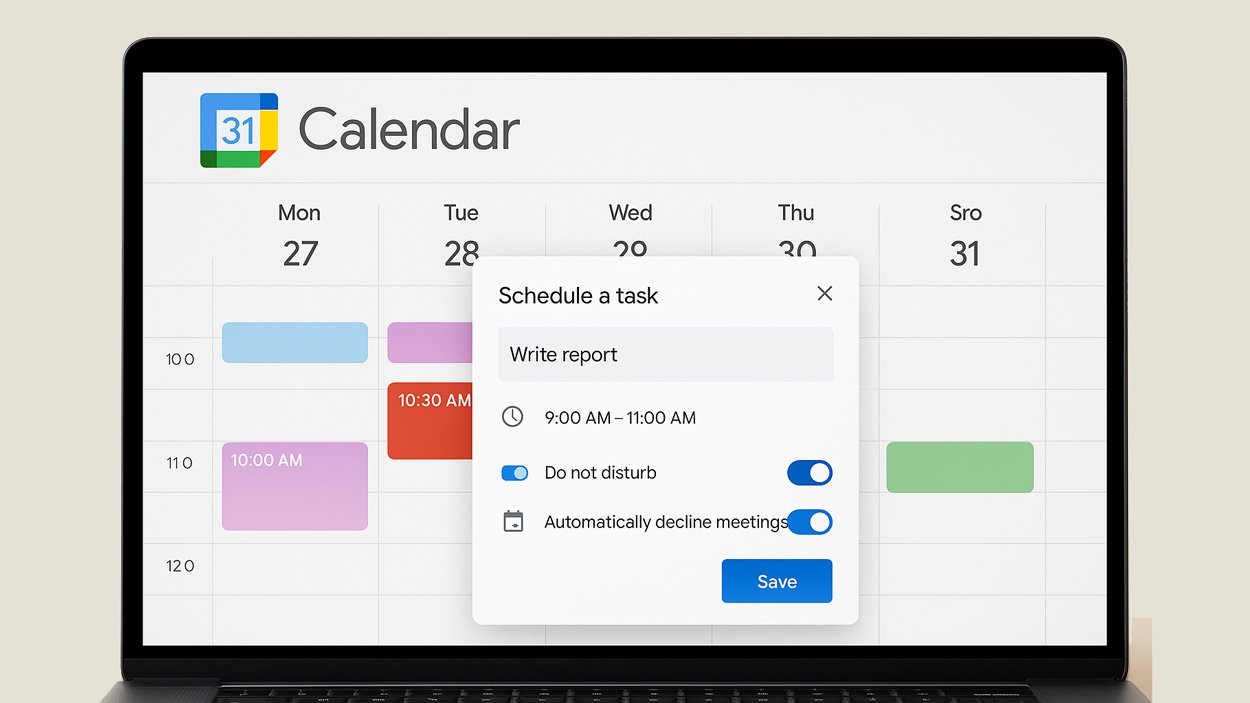Social media bullying continues to shape how young people live, interact, and learn. For instance, in the education sector, schools report rising instances of students being harassed via group chats and direct messages. In the workplace, employers increasingly face digital harassment issues as remote interactions expand. In this article, we examine key statistics that highlight prevalence, outcomes, and emerging patterns of social media bullying.
Editor’s Choice
- In 2025, 36% of U.S. teens (ages 13‑17) reported ever experiencing cyberbullying in their lifetime, while 26% reported cyberbullying in the past 30 days.
- Over 26% of American teenagers reported cyberbullying within the previous 30 days in 2025.
- Only 38% of bullying victims in 2025 reported the incident to a trusted adult.
- Female‑identifying teens were 1.8× more likely than male peers to experience appearance‑based harassment in 2025.
- In the U.S., only 42% of LGBTQ+ youth reported digital harassment in 2025, though their target rate remains higher than that of their peers.
- Across social media platforms globally, about 1 in 3 internet users have experienced bullying in 2025; for U.S. teens, the rate is above average.
Recent Developments
- New policy changes by major platforms in Q1 2025 noted an increase in bullying content on Meta Platforms’ sites from 0.06‑0.07% to 0.07‑0.08% of views.
- A proposed U.S. bill, the Kids Off Social Media Act, was introduced in January 2025 to raise the minimum age for social media use and limit algorithms for under‑17s.
- In 2024‑25, 67% of U.S. teenagers reported that social media sites were doing only a fair or poor job of addressing bullying.
- The shift to hybrid learning and increased screen time due to COVID‑19 after‑effects continues to correlate with higher cyberbullying rates.
- A 2025 study employed AI models that incorporate demographic and psychological factors to detect cyberbullying severity, with accuracy up to 98%.
- Lower‑income households report nearly double the cyberbullying incidence compared to higher‑income households in some studies.
Top Reasons Why People Are Cyberbullied
- 36.1% of individuals said they were cyberbullied because of their dating partners or relationship choices.
- 31% reported being targeted due to their friends, social circles, or who they associate with.
- Another 31% experienced cyberbullying because of their sexual behavior or perceived sexual identity.
- 26.4% were bullied online due to their weight, reflecting body-shaming as a major trigger.
- 21.9% said their physical appearance was the primary reason for being harassed online.

Most Affected Age Groups
- Preteens (ages 9‑12) reported about 29% experiencing some form of online harassment in 2025.
- Young adults ages 18‑24 reported about 24% experiencing cyberbullying in 2025.
- Adults ages 30‑49 reported around 18% in the U.S. in 2025.
- Elementary school children under age 10 reported about 18% exposure to digital harassment in 2025.
- For U.S. teens, 26.5% reported cyberbullying in the previous 30 days in 2023, up from 23.2% in 2021.
- Students ages 12‑18: In the school year 2021‑22, about 19% reported being bullied, and 22% of that group reported bullying by online or text.
- Among bullied students in the school year 2021‑22, 59% of 7th‑graders reported being bullied more than 10 days, versus only 9% of 12th‑graders.
Gender Differences in Social Media Bullying
- In one 2025 study, 36.6% of boys reported cyberbullying in the previous 30 days vs. 28.6% of girls.
- Overall lifetime incidence remains higher for girls at 59.2% compared to 49.5% for boys.
- Among LGBTQ+ youth in the U.S., 42% faced digital harassment in 2025.
- 61% of female respondents noted being harassed based on appearance or body image in 2025.
- Teen girls were more likely than boys to be cyberbullied due to appearance (17% vs. 11%).
- For boys aged 15‑19 in 2025, 23% reported being bullied because of sports performance or competitiveness online.
- In 2025, 32 U.S. states updated their cyberbullying laws, and all 50 states now have cyberbullying legislation.
Cyberbullying by Social Media Platform
- Instagram was the top platform, with 42% of users reporting cyberbullying.
- Facebook followed at 37%, making it the second most reported platform.
- Snapchat came third, with 31% of users experiencing cyberbullying.
- WhatsApp was linked to 12% of cyberbullying cases despite being a private app.
- YouTube saw 10% of users report cyberbullying on the platform.
- Twitter had the lowest share, with 9% of users reporting incidents.

Geographic Distribution of Social Media Bullying
- Internationally, in 2025, about 22% of global internet users aged 12‑17 reported experiencing cyberbullying.
- In India, about 37% of teens said they were bullied online in 2025.
- In Europe, 31% of students reported at least one instance of online harassment in the 2024‑25 academic year.
- In Australia, about 26% of youth reported school‑related digital bullying in 2025.
- In 2025, 42% of U.S. LGBTQ+ youth said they experienced cyberbullying, a higher rate than the national teen average.
Emotional & Psychological Effects
- Nearly 93% of online bullying victims report negative mental‑health effects, including depression, anxiety, and feelings of hopelessness.
- Adolescents who experience cyberbullying are about 2.07 times more likely to report depressive symptoms than those who do not.
- Cyberbullying victimization was linked to a 64% explained variance in suicidal risk when combined with depression.
- Among U.S. high‑school students, frequent social‑media use correlates with persistent feelings of sadness or hopelessness.
- Youth exposed to cyberbullying experience lower educational attainment and greater unhappiness.
- About 41% of children reported social anxiety as a result of cyberbullying.
- About 37% of children associate depression directly with online bullying.
Where Adults Are Most Likely to Be Cyberbullied
- 75% of adults were cyberbullied on social media, the most common platform for harassment.
- 41% experienced cyberbullying across multiple platforms, highlighting its widespread nature.
- 25% were targeted on forums or discussion sites, including niche communities.
- 24% faced cyberbullying via texting or messaging apps, often in private settings.
- 16% encountered bullying in online gaming, pointing to toxicity in virtual play.
- 11% were harassed through their personal email accounts, showing digital reach.
- 10% were cyberbullied on online dating platforms, where vulnerability is high.
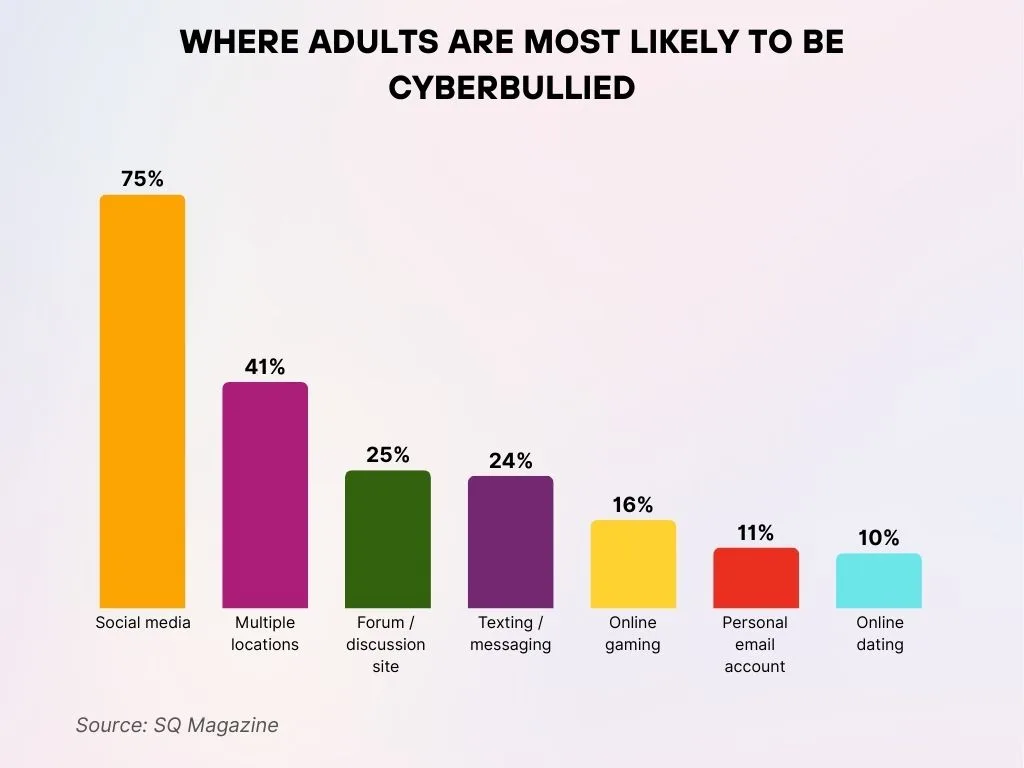
Physical Health Effects
- Students who are cyberbullied are 2 times more likely to suffer headaches, stomachaches, and psychosomatic symptoms.
- 13% of students bullied at school reported negative impacts on physical health.
- Bullying is linked to somatic complaints, including sleep disturbances and bedwetting.
- Around 79% of bullied students report weekly pain versus 57% non-bullied peers.
- Bullying victims show increased headaches, sleep problems, and abdominal pain.
Impact on Academic Performance
- 20% of bullied students reported that bullying negatively affected their schoolwork.
- 64% of cyberbullied students say it impacts their ability to learn and feel safe at school.
- Victimization is linked to higher absenteeism and increased drop-out risk.
- Cyberbullied students often show a decline in GPA or test scores.
- Tweens targeted online are more likely to skip class or avoid school.
- 6.5% of tweens reported that cyberbullying negatively impacted their schoolwork.
- Youth who are both victims and perpetrators have worse academic outcomes.
Most Common Cyberbullying Threats
- 41% of cases involve general harassment, the most reported form of online abuse.
- 35% of victims face offensive name-calling, showing how common hurtful language is online.
- 27% report severe harassment, involving more intense or repeated abuse.
- 26% experience purposeful embarrassment, often through public shaming.
- 18% receive physical threats, showing how online abuse can escalate toward real-world danger.
- 13% are subjected to stalking, marked by persistent unwanted online attention.
- 12% face sexual harassment, highlighting vulnerability in digital spaces.
- 12% report sustained harassment, showing how some cyberbullying continues over time.

Cyberbullying and Suicide Risk
- 38.4% of cyberbullying victims reported suicidal ideation versus 16.6% of non-victims.
- Cyberbullying victims in 2025 had 1.9x higher odds of suicidal thoughts and were 2.5x more likely to report suicidal ideation compared to non-victims.
- Bullying victims are 1.7 times more likely to experience suicidal ideation.
- Cyberbullied adolescents are 2.5 times more likely to report suicidal ideation.
- Bullying combined with depression or trauma significantly increases suicide risk.
- Feelings of loneliness and substance use raise suicide risk among cyberbullying victims by 35%.
- Social media use and online victimization are linked to increased suicide planning in 20% of teens.
- Victims of cyberbullying are over 2 times more likely to attempt suicide compared to non-victims.
- Suicide ideation prevalence is 68.9% among bullied adolescents presenting with psychiatric symptoms.
- Individuals reporting cyberbullying are up to 11.5 times more likely to have documented suicidal ideation.
Risk Factors for Social Media Bullying
- 95% of U.S. high schoolers use social media, with frequent users at higher bullying risk.
- Nearly 30% of LGBTQ+ students reported experiencing cyberbullying in 2021.
- Female adolescents cyberbullied face a 3 times higher risk of suicide attempts.
- Low self-esteem and being both victim and perpetrator increase cyberbullying risk by over 25%.
- High screen time or late-night use correlates with a 40% increase in bullying exposure.
- Lack of parental supervision or digital literacy raises cyberbullying risk by 35%.
- Marginalized racial or disabled youth face 2 times higher cyberbullying rates.
- About 60% of offline bullying perpetrators are involved in cyberbullying too.
- Frequent social media users are 77% more likely to experience bullying victimization.
- Girls aged 15-17 are 54% likely to experience cyberbullying behaviors compared to boys’ 44%.
Protective Factors Against Cyberbullying
- Support from friends reduces cyberbullying risk by 30%.
- Supportive family cohesion lowers cyber-victimization by 25%.
- Parental supervision mitigates bullying’s mental health effects by 20%.
- Strong peer relationships and good family function reduce bullying risk by 28%.
- Youth with digital literacy show a 24% lower likelihood of online abuse.
- Participation in after-school programs cuts bullying exposure by 18%.
- Clear school policies improve intervention success rates by over 35%.
- Family support is linked to 26% higher life satisfaction and lower victimization.
- Emotional regulation skills reduce cyberbullying involvement by about 22%.

Trends Over Time
- Cyberbullying among U.S. adolescents rose from 33.6% in 2016 to 58.2% by 2025.
- In 2023, 26.5% of teens reported cyberbullying, up from 23.2% in 2021.
- Global prevalence ranges from 3.3% to 74.6% depending on the region.
- U.S. school bullying dropped from 28% in 2010‑11 to 19% in 2021‑22.
- Traditional bullying declined, but cyberbullying continues to rise.
- Bullying has a more negative effect on mental health in children under 15.
- More mobile access and apps mean increased bullying incidents.
- Awareness is rising, but reporting remains inconsistent.
Content Moderation and Platform Response
- 74% of U.S. teens rated platforms poorly for handling cyberbullying.
- 15% of Australian youth received online threats recently.
- AI models can now detect severe cyberbullying with 98% accuracy.
- Most platforms added reporting and blocking tools, but transparency varies.
- School-platform partnerships are growing, but adoption is uneven.
- Private messaging and gaming chats remain less moderated.
Correlation with Traditional Bullying
- 40.7% of bullying cases involve traditional-only, 30.4% cyber-only, and 28.9% both forms.
- Victims of cyberbullying are 41.5% likely also to be traditional bullying victims.
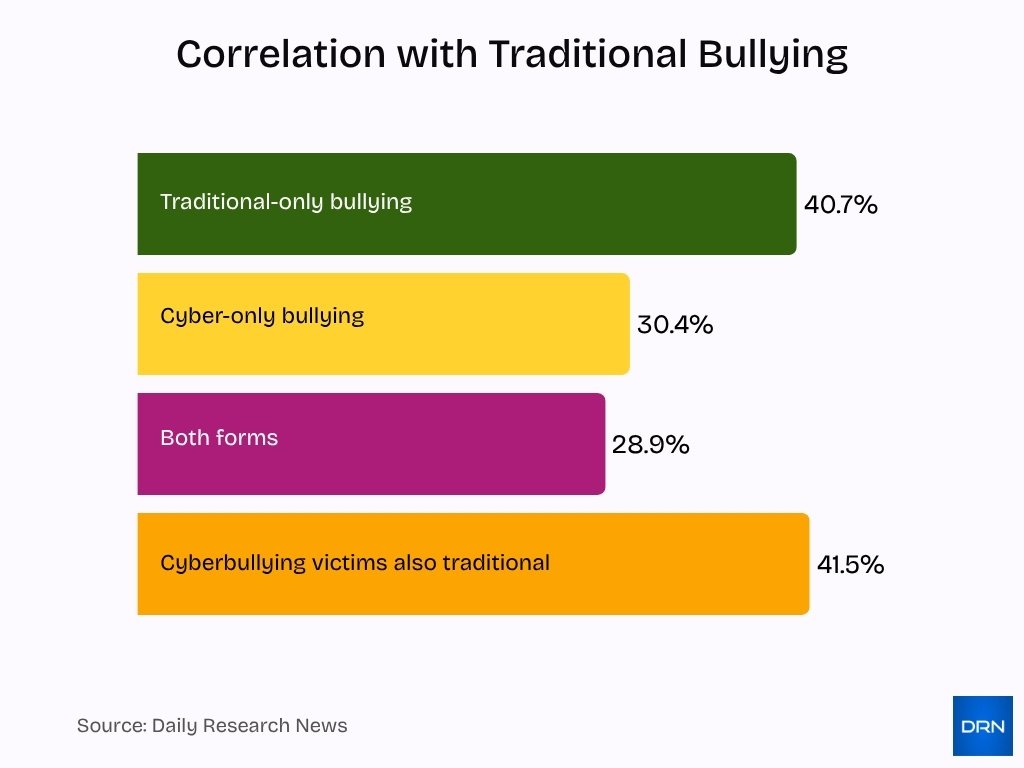
- Combined bullying types produce a 3.7 times greater risk of suicidal ideation than no bullying.
- Dual victimization increases absenteeism risk by 1.5 times and dropout risk by 1.7 times.
- Comprehensive anti-bullying programs addressing both forms reduce victimization by up to 25%.
- Victims of one bullying type are about 2 times more likely to experience the other.
Legal and Policy Responses
- All 50 U.S. states have anti-bullying laws covering cyberbullying.
- Online harassment of minors is treated as a serious offense under federal and state laws.
- Anti-bullying laws reduce teen depression and suicidal ideation by up to 15%.
- Over 70% of schools have adopted digital citizenship curricula to prevent bullying.
- Age-verification and algorithm transparency laws are under debate in multiple legislatures.
- Enforcement is inconsistent due to anonymity and jurisdictional challenges.
- Non-legal responses such as education and peer programs are used in over 60% of schools.
- Roughly 40% of teens feel teachers or law enforcement adequately address online abuse.
- Criminal charges and permanent account bans are seen by 50%+ of teens as effective deterrents.
- Schools with clear anti-bullying policies see a 7-13% reduction in school violence.
Frequently Asked Questions (FAQs)
In 2025, approximately 67% of U.S. teenagers reported having experienced some form of cyberbullying on social media.
As of early 2025, approximately 1 in 3 global internet users (around ~33%) have experienced social media bullying.
About 74% of U.S. teens believed social media platforms were doing only a fair or poor job of handling cyberbullying.
Conclusion
Bullying on social media remains a significant and evolving challenge. The data show that over one in four U.S. teens now report recent cyberbullying, and lifetime exposure is rising. Both traditional and online victimisation remain tightly interlinked, and the consequences span mental health, academic outcomes, and physical well‑being.
At the same time, research highlights protective factors such as strong peer and family support, emotion regulation skills, and innovative policy responses. Platforms and policymakers are beginning to respond, but the pace of change still lags the speed of youth digital engagement. As digital interaction continues to grow, so does the urgency of building resilient systems, online, in schools, and among families.














